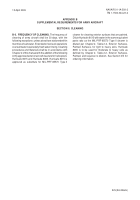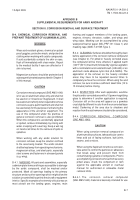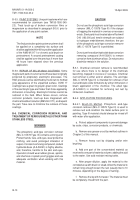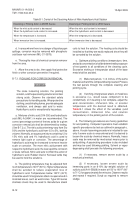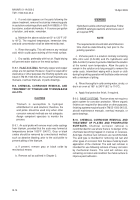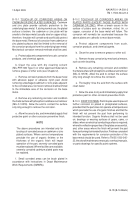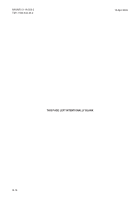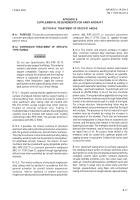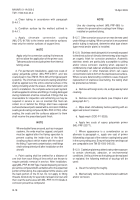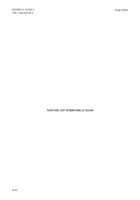TM-1-1500-344-23-2 - Page 215 of 240
B-13
NAVAIR 01-1A-509-2
TM 1-1500-344-23-2
15 April 2009
(3)
Rinse parts quickly and thoroughly in clean,
hot water.
(4)
Transfer parts to the nitric-hydrofluoric acid
pickling bath. A typical bath consists of 15% nitric acid
(O-N-350), 2 to 3% hydrofluoric acid (MIL-A-24641),
and 82 to 83% clean water, all by volume.
(5)
Immerse parts for five to 15 minutes at a
temperature of 60
°
to 140
°
F (16
°
to 60
°
C). Scrub or
agitate as required.
NOTE
The required acid concentration, temperature,
and time shall be determined by test prior to
starting pickling operations (see B-7.2.c). New
welds should be mechanically vibrated during
the pickling operations.
(6)
Immediately rinse thoroughly in clean, hot
water.
(7)
Transfer the parts to a passivating solution
for treatment as follows:
(a) Immerse parts in an aqueous solution
containing 20 percent by volume nitric acid (O-N-350) at
ordinary room temperature for 30 minutes.
(b) Rinse in clean, hot water.
(c) Immerse parts for one hour in a hot
aqueous solution (140
°
to 160
°
F (70
°
to 71
°
C)) containing
5% sodium dichromate.
(d) Rinse thoroughly.
B-7.4. PAINT SYSTEMS. Stainless steel parts normally
are not painted. However, where extreme corrosive
conditions are encountered or where organic finishes
are required for decorative purposes, finishing systems
may be found in TM 55-1500-345-23, the overhaul
manuals, or on the parts drawings.
B-8. CHEMICAL CORROSION REMOVAL AND
TREATMENT OF COPPER AND COPPER BASE
ALLOYS.
Copper and copper alloys are relatively
corrosion resistant, and attack on such components will
usually be limited to staining and tarnish. Generally
such changes in surface conditions are not dangerous
and should ordinarily have no effect on the function of
the part. Copper corrosion is evidenced by the
accumulation of colored products. Corrosion can be
removed from copper with phosphoric acid base rust
remover (MIL-C-10578), provided that there is no danger
of trapping the acid in the crevices or recesses.
B-8.1. CORROSION REMOVAL FROM IMMOVABLE
AREAS.
a. Protect adjacent components to prevent damage
by chemical agents.
b. Remove grease or soil from the area to be treated
with cleaner and/or solvent (see Chapter 2).
c. Remove corrosion with phosphoric acid base rust
remover (MIL-C-10578).
d. Rinse the area thoroughly, dry, and apply final
protective paint or other finish if required.
B-8.2. CORROSION REMOVAL FROM REMOVABLE
COMPONENTS.
a. Components which can be disassembled can be
treated in immersion tanks. The tanks should be
manufactured from or lined with stainless steel, lead,
ceramic, glass, or acid resistant rubber. Immersion
racks should be manufactured from stainless steel or
Monel. The proper conditions (time, temperature, and
acid concentration) for the process should be determined
by test, using panels of the same material which is to be
treated.
b. Disassemble the component as necessary. Do
not simultaneously process dissimilar metals in the acid
bath.
c. Degrease parts by immersion, spray, or vapor
cleaning.
d. Immerse parts in a solution containing 5 to 10%
sulfuric acid (A-A-55828), by volume, in water; add the
acid to the water, not the water to the acid. Maintain
solution between 60
°
and 120
°
F (15
°
and 49
°
C). The
required temperature, immersion time, and acid
concentration shall be determined by test.
e. Rinse thoroughly.
Back to Top



